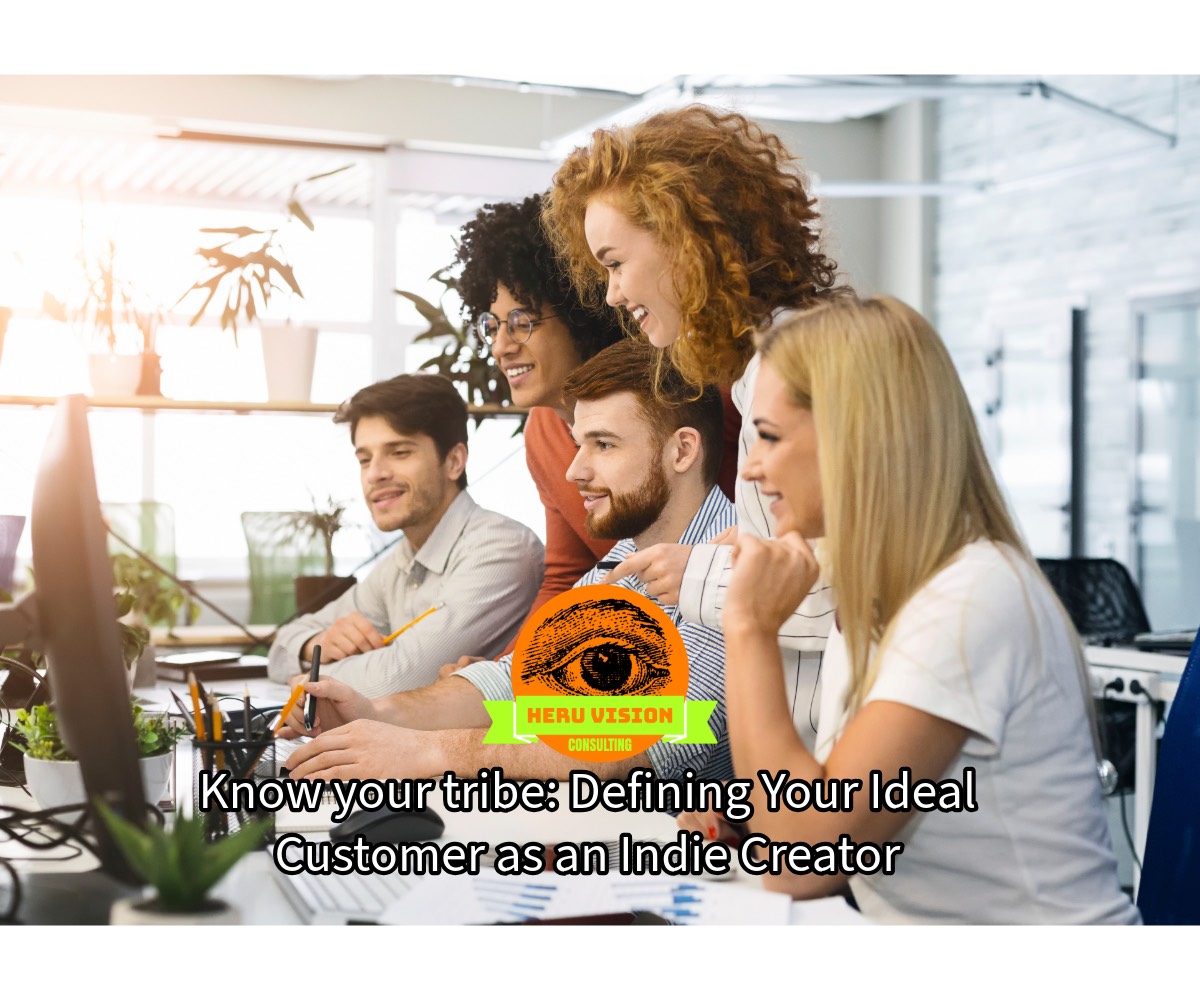Know Your Tribe: Defining Your Ideal Customer as an Indie Creator
As an indie creator or small business owner, you’re juggling many hats. You’re the artist, the marketer, the accountant, and the customer service rep, all rolled into one. With so much on your plate, it’s easy to fall into the trap of trying to appeal to everyone. But here’s the secret: the most successful businesses focus on a specific ideal customer.
Think of it like this: you wouldn’t use a fishing net to catch butterflies. You need the right tools for the right job. Similarly, you need to tailor your marketing and offerings to attract the right customers – those who resonate with your brand and are most likely to become loyal fans.
So, how do you define your ideal customer?
1. Reflect on Your Existing Audience (if you have one):
- Analyze your current customers: Who are your most engaged followers? Who buys your products consistently? What do they have in common?
- Look at your social media analytics: Which demographics are most interested in your content? What are their interests?
- Read customer reviews and testimonials: What are people saying about your work? What problems are you solving for them?
2. Dig Deeper with These Key Questions:
- Demographics: Age, gender, location, education, income, occupation, family status.
- Psychographics: Values, interests, lifestyle, personality, attitudes, motivations.
- Pain points: What problems are they facing? What are their frustrations?
- Goals and aspirations: What are they hoping to achieve? What are their dreams?
- Where do they hang out online? Which social media platforms do they use? What websites do they visit? What blogs do they read?
3. Craft a Customer Persona:
Bring your ideal customer to life by creating a detailed persona. Give them a name, a face, and a story. This will help you visualize and connect with your target audience.
Example:
- Name: Sarah
- Age: 32
- Occupation: Freelance graphic designer
- Values: Creativity, authenticity, sustainability
- Pain points: Struggling to stand out in a crowded market, feeling overwhelmed by social media marketing.
- Goals: Build a thriving design business, attract dream clients, make a positive impact.
4. Use Your Ideal Customer Profile to Guide Your Decisions:
- Product development: Create products and services that solve your ideal customer’s problems and fulfill their needs.
- Marketing and messaging: Tailor your content and communication to resonate with their values and interests.
- Pricing: Set prices that align with their budget and perceived value.
- Customer service: Provide support that meets their expectations.
Why is Defining Your Ideal Customer So Important?
- Increased efficiency: You’ll waste less time and resources marketing to people who aren’t interested in your offerings.
- Improved messaging: You can craft compelling marketing messages that speak directly to your target audience’s needs and desires.
- Stronger connections: You can build genuine relationships with your customers by understanding their motivations and aspirations.
- Increased sales and revenue: By attracting the right customers, you’ll increase your chances of converting them into loyal fans who buy your products and services repeatedly.
Defining your ideal customer is an ongoing process. As your business evolves, your target audience may also change. Regularly review and refine your customer profile to ensure you’re always connecting with the right people.
By taking the time to understand your ideal customer, you’ll be well on your way to building a thriving business that resonates with your tribe and fulfills your creative vision.
Need help defining your ideal customer, contact Heru Vision for a free consultation.


I always tell my team that. We have to be customer-centric.
You made some nice points there. I looked on the internet for the subject and found most people will consent with your blog.
[…] allows businesses to tailor their marketing efforts and product development strategies to specific customer segments, resulting in increased engagement, customer loyalty, and ultimately, business […]
This really answered my problem, thanks!
I would like to show my appreciation to the writer for rescuing me from this crisis. Just after searching throughout the world wide web and seeing solutions that were not beneficial, I figured my entire life was done. Being alive without the presence of solutions to the difficulties you’ve resolved by means of the report is a critical case, and ones which could have badly affected my entire career if I hadn’t discovered your site. Your good skills and kindness in maneuvering the whole thing was vital. I don’t know what I would have done if I had not discovered such a thing like this. I’m able to now look ahead to my future. Thanks a lot very much for your expert and sensible guide. I won’t think twice to propose your blog post to any person who would like guide about this area.
Hey I am so glad I found your blog, I really found you by mistake, while I was searching on Askjeeve for something else, Anyways I am here now and would just like to say thank you for a fantastic post and a all round thrilling blog (I also love the theme/design), I don’t have time to browse it all at the minute but I have saved it and also added your RSS feeds, so when I have time I will be back to read more, Please do keep up the fantastic job.
What i do not realize is actually how you’re not actually much more well-liked than you may be now. You are very intelligent. You realize therefore significantly relating to this subject, made me personally consider it from so many varied angles. Its like men and women aren’t fascinated unless it is one thing to accomplish with Lady gaga! Your own stuffs great. Always maintain it up!